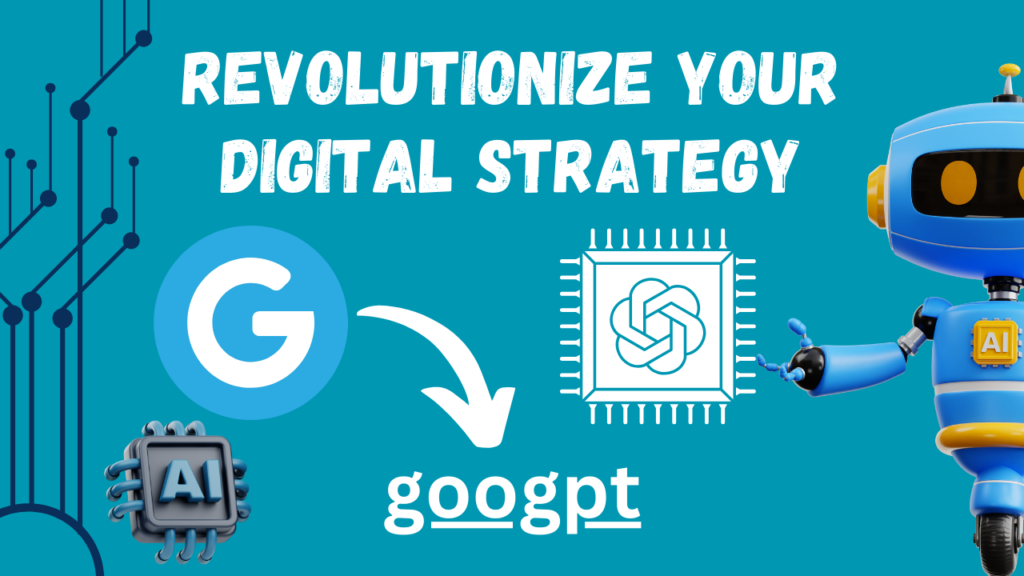Introduction
In the realm of artificial intelligence (AI), GooGPT emerges as a transformative force, pushing the boundaries of natural language understanding and generation. This comprehensive article explores the evolution, capabilities, and applications of GooGPT, shedding light on its impact across diverse industries. From its inception to its current advancements, GooGPT stands as a testament to the potential of AI in reshaping human-machine interaction.
Unveiling GooGPT: Origins and Development
- Genesis of GooGPT
GooGPT, born out of OpenAI’s research endeavors, builds upon the foundation laid by the GPT (Generative Pre-trained Transformer) series. Tracing its origins to GPT-1, GPTGO represents the culmination of iterative improvements in natural language processing.
- Evolutionary Milestones
With each iteration, from GPT-1 to the latest GPT-3.5, GooGPT undergoes refinement, enhancing its capacity to comprehend and generate human-like text. The evolution of GPTGO reflects the relentless pursuit of AI excellence, fueled by advancements in machine learning algorithms and computational power.
Understanding GooGPT’s Capabilities
- Natural Language Understanding (NLU)
GooGPT exhibits a profound understanding of human language, surpassing conventional AI models in contextual comprehension and semantic analysis. Its ability to grasp subtleties and nuances in text enables it to generate responses that resonate with human users.
- Contextual Generation
Unlike rule-based systems, GooGPT generates text based on contextual cues, producing coherent and contextually relevant outputs. Whether it’s completing sentences, crafting stories, or generating code, GPTGO demonstrates a remarkable capacity for context-aware generation.
- Multimodal Integration
GooGPT transcends textual inputs, seamlessly integrating with other modalities such as images and audio. This multimodal capability broadens its scope of applications, enabling it to interpret and generate content across diverse formats with exceptional fidelity.
Applications Across Industries
- Content Creation and Marketing
GooGPT streamlines content creation processes by generating engaging articles, product descriptions, and marketing copy. Its ability to adapt its tone and style to target audiences enhances marketing strategies, driving user engagement and conversion rates.
- Customer Service and Support
GooGPT powers chatbots and virtual assistants, revolutionizing customer service delivery with its natural language understanding capabilities. By analyzing user queries and providing contextually relevant responses, GooGPT enhances user satisfaction and operational efficiency.
- Education and Training
In the realm of education, GooGPT facilitates personalized learning experiences through adaptive tutoring systems and interactive course materials. It generates practice questions, explanations, and simulations tailored to individual learner needs, fostering effective knowledge acquisition and retention.
- Healthcare and Research
GooGPT accelerates medical research and diagnosis by analyzing vast volumes of scientific literature and patient data. Its ability to comprehend medical terminology and extract relevant insights empowers researchers and healthcare professionals to make informed decisions and advancements in the field.
Unlocking GooGPT’s Potential: Exploring Its Abilities
- Continual Learning
GooGPT’s architecture is designed to facilitate continual learning, allowing it to adapt and improve its performance over time. Through exposure to new data inputs and user interactions, GPTGO refines its understanding of language patterns, staying abreast of evolving linguistic trends and user preferences. This iterative learning process enables GooGPT to provide increasingly accurate and contextually relevant responses, enhancing its utility across a wide range of applications.
- Bias Mitigation
OpenAI prioritizes the mitigation of biases within GooGPT’s training data and algorithms to promote fairness and inclusivity in its outputs. By employing techniques such as data preprocessing, model regularization, and bias-aware training, GPTGO strives to minimize the propagation of stereotypes, prejudices, and discriminatory language in its generated text. This commitment to bias mitigation ensures that GPTGO’s outputs are more reflective of diverse perspectives and less susceptible to perpetuating harmful biases.
- Customization and Fine-Tuning
GPTGO offers users the flexibility to customize and fine-tune its performance to suit specific tasks, domains, and user requirements. Through techniques such as transfer learning, domain adaptation, and parameter tuning, organizations can optimize GPTGO’s capabilities for specialized applications, such as legal document analysis, technical writing, or creative storytelling. This customization empowers users to tailor GPTGO to their unique needs, maximizing its effectiveness and relevance in various contexts.
Exploring Emerging Trends and Challenges
- Ethical Considerations
As AI technologies like GPTGO become increasingly integrated into everyday life, ethical considerations surrounding their use become more complex and consequential. Key ethical considerations include issues of data privacy, consent, transparency, accountability, and the potential societal impacts of AI-driven automation. Addressing these ethical concerns requires a multifaceted approach that balances technological advancement with ethical responsibility, ensuring that AI systems like GPTGO uphold principles of fairness, transparency, and respect for human values.
- Regulatory Landscape
The regulatory landscape governing AI technologies is evolving in response to the rapid proliferation of AI applications and their potential societal impacts. Policymakers and regulatory bodies worldwide are grappling with issues such as data protection, algorithmic accountability, bias mitigation, and AI safety. Compliance with existing regulations, such as the European Union’s General Data Protection Regulation (GDPR) and emerging regulatory frameworks, is essential for organizations leveraging GPTGO to mitigate legal risks and safeguard user rights.
- Human-AI Collaboration
GPTGO’s capabilities in natural language processing and generation facilitate seamless collaboration between humans and AI systems in various domains. By augmenting human intelligence with AI-driven insights, organizations can enhance decision-making, creativity, productivity, and innovation. Human-AI collaboration enables tasks to be completed more efficiently, accurately, and cost-effectively, leveraging the complementary strengths of humans and machines to achieve shared goals and objectives.
Conclusion
GooGPT represents a paradigm shift in AI technology, offering unprecedented capabilities in natural language processing and generation. Its ability to continually learn, mitigate biases, and adapt to user needs enables a wide range of applications across industries. However, as AI technologies like GPTGO become increasingly ubiquitous, it is imperative to address emerging trends and challenges, such as ethical considerations, regulatory compliance, and human-AI collaboration. By navigating these challenges thoughtfully and leveraging GPTGO capabilities responsibly, organizations can harness the full potential of AI to drive innovation, efficiency, and user satisfaction in the digital age.

